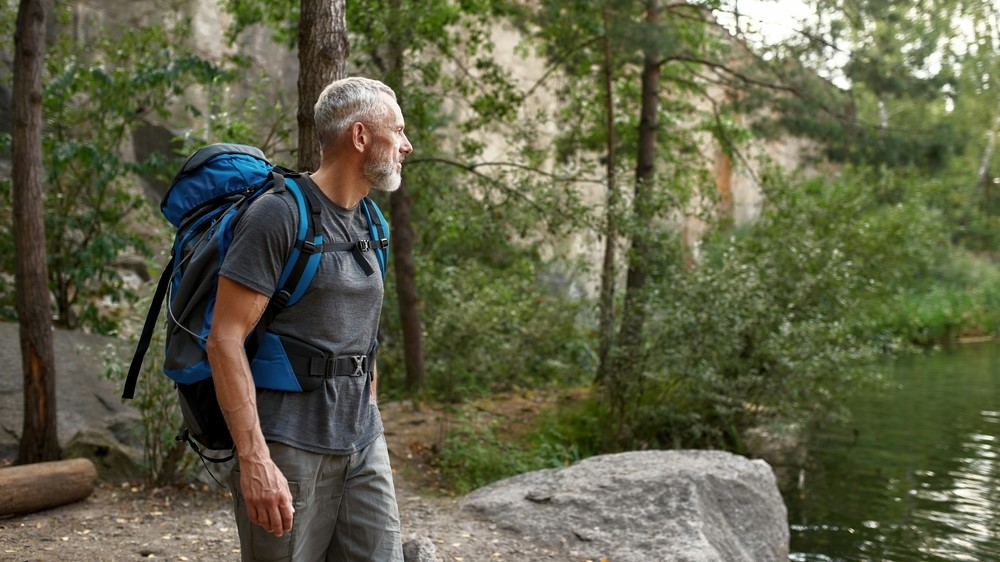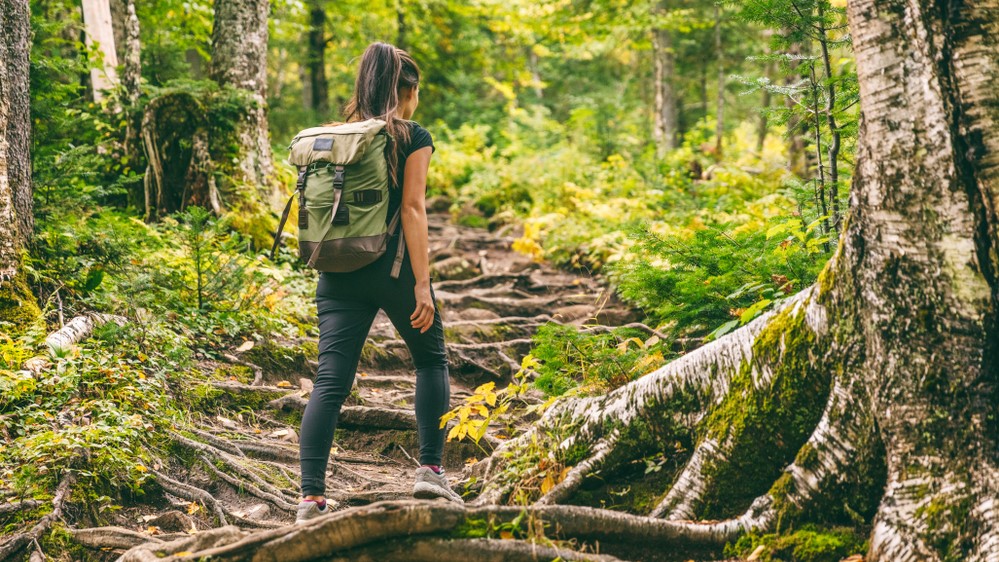How to stay safe when hiking alone
Heading out by yourself? Here's how to stay safe on the trails

If you have ever thought you’d like to pull on pair of sturdy boots and go hiking (check out the best hiking boots here), you absolutely should. Spending time in nature is not only good for your physical health, but has also been proven to boost cognition and mood. And it’s a great way to get away from daily life for a few hours. But what about heading out by yourself? Again, the answer is yes, but you need to be prepared and know how to stay safe because it’s all going to be up to you. Of course, that’s also part of the adventure.
How to stay safe when hiking alone — before you go
Do your route research
- Know exactly where you are going and what terrain to expect. You can download maps to your phone, meaning you can access them even when you are far from cell phone coverage. Try AllTrails, Gaia GPS, Komoot, Maps.me or even Google Maps. You can also read comments and look at photos posted by other hikers about your intended route.
- Tell someone where you are going and when you will be finished. Let them know when you are back.
- Check out the weather forecast. You do not want to be caught out by rain, cold, heat or decreased visibility. If you have to postpone, do so. The trail will be there tomorrow.
- Find out if there are there any wild animals in the area you need to be aware of. Do not attempt to approach or feed any of them, even the cute ones.
Get the right kit
- Backpack: Go for one that is water-resistant, tear-resistant, and has outside pockets for water bottles. Side pockets and hip-belt pockets will make it easy to access snacks and your phone. Try it on for comfort. A 25-30L capacity should suffice.
- Boots: Spend time choosing your hiking boots. Get the best pair you can afford and break them in before you hit the trails. Check out our guide to the best hiking boots here, and read up on how hiking boots should fit.
- Pants should be light but sturdy, quick-drying, and have plenty of pockets. Some can be converted into trail shorts
- Tops and shirts should be durable, light, and move sweat away from the skin (wicking). Avoid cotton, which holds on to sweat and becomes heavy
- A fleece is an ideal mid-layer, and you can easily stow it away if you are too warm
- A waterproof outer layer is a must
- Socks should be durable, comfortable, and cushioned
- A hat with a brim will keep the sun off your race (and the rain, too)
- Bring a beanie, in case it turns cold
- A good pair of hiking gloves: you’ll be thankful in chilly conditions
- Food and water: Bring more water than you think you will use. The amount you need will depend on your fitness, the level of exertion demanded by the route, the weather, how much you sweat, and how long you intend to be out. A decent rule thumb is 500ml (17 ounces) per hour. before you leave, find out if there are any sources of clean water along your route.
- Don’t forget snacks: nuts/seeds, dried fruit, protein bars, and jerky are all smart options. Fresh fruit is always good, too (though a ripe banana can turn to mush in a backpack!)
What else?
Fully charged phone, a whistle, a basic first aid kit, sunblock, bug spray, plastic bag (to carry away your trash), fire-making supplies (check for campfire regulations), extra insulation (even a space blanket), and a flashlight/headlamp. Also, bring a physical map of your route and a compass. You may have to learn how to read one and use the other, but it will be worth it. And you can boast, too.
Consider investing in a hiking GPS/satellite communicator — such as a Garmin inReach mini, an ACR Bivy Stick or a Spot — for maintaining off-grid contact. They’re great for two-way messaging anytime, location tracking, sending updates to friends and family, and getting weather updates.

How to stay safe when hiking alone — before you go
Trail etiquette
- Give way to hikers going uphill. You will appreciate this small gesture when you are that hiker. And a thank you costs nothing.
- Acknowledge a hello: hikers are friendly types, so may get a lot of cheery greetings
- If you are sharing a trail with mountain bikers, remain alert. It is usually safer for you to give way than it is for a biker.
- As a solo hiker, give way to groups. It’s sensible and the right thing to do.
- Follow the Leave no trace rules. They are all about minimum impact on the environment and maximum enjoyment for all.
Stay safe
- It is a horrible fact of life that solo women hikers have to take extra care, but this should not stop you from enjoying the great and beautiful outdoors.
- Don’t tell everyone where you’re going or where you are (so, restrict those excitable social media posts).
- If you have dog, bring her/him along, for company and security. Never forget that your dog is your responsibility at all times.
- Be aware of your surroundings. This may mean leaving your favorite playlist for another time.
- If you do come across someone you’re unsure off, say you are part of a group or a couple and don’t tell them where you are going. Be polite but firm. If something doesn’t feel right, trust that instinct and don’t hesitate to use that whistle you brought. Three long blasts will signal distress.
- Consider investing in pepper spray.
- Stay on the trail.
All of this might seem like a lot of preparation, but the sense of security that comes with proper planning means you will get more from your hike and you will likely want to do it again and again.
Looking for more hiking advice? Here's what to pack in your first aid kit, the best hikes in Yosemite National Park and the best hikes to do in Yellowstone National Park. Enjoy!
Sign up to get the BEST of Tom's Guide direct to your inbox.
Get instant access to breaking news, the hottest reviews, great deals and helpful tips.
John is a writer and editor based in London. He was worked for magazines such as Runner’s World, Men’s Health, Women’s Health and Cosmopolitan. A keen runner, what he lacks in ability he makes up for with enthusiasm and excuses.

